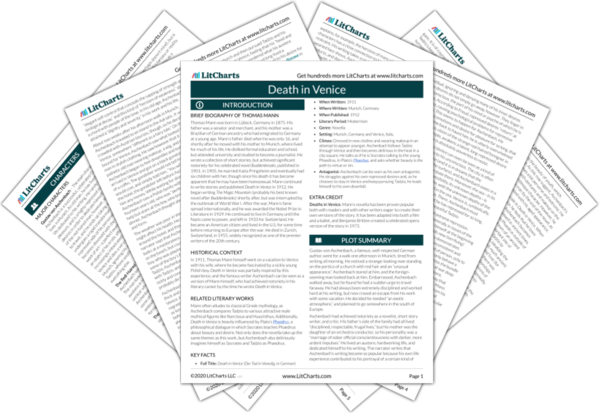The Sea Quotes in Death in Venice
If you wanted to reach someplace overnight that was incomparable, different as a fairy tale, where would you go? But that was obvious! . . . A week and a half after his arrival on the island, in the early morning haze, a swift motor launch carried him and his luggage back across the waters to the naval base, where he went on land only long enough to ascend a plank gangway onto the damp deck of a ship that lay under steam and was heading for Venice.
He loved the sea for deep-seated reasons: because of the hard-working artist’s yearning for repose, his desire to take shelter in the bosom of undifferentiated immensity from the demanding complexity of the world’s phenomena; because of his own proclivity—forbidden, directly counter to his life’s work, and seductive for that very reason—for the unorganized, immoderate, eternal: for nothingness.

















